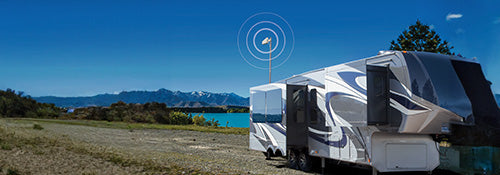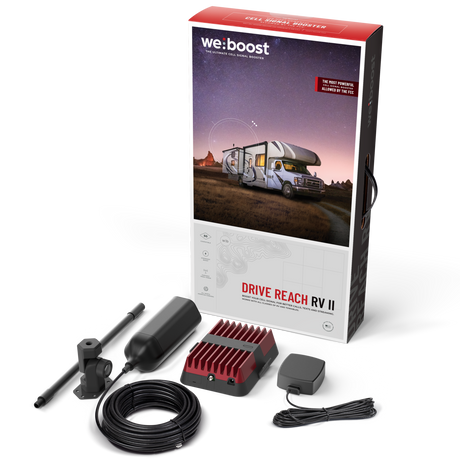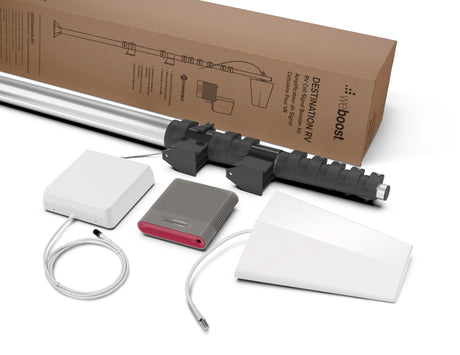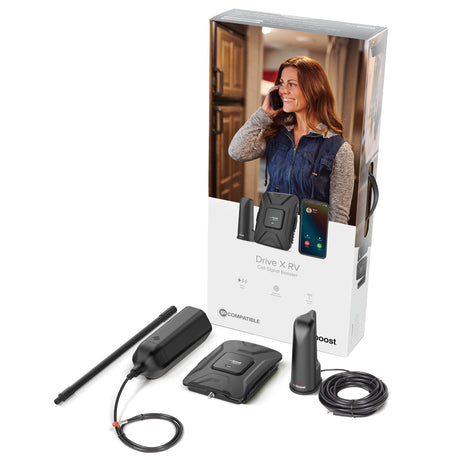Everything You Need to Know About RV Cell Phone Boosters
Traveling or living in an RV offers an unbeatable sense of freedom and adventure, but staying connected can often be a challenge, especially in remote or rural areas where cell phone signal is weak or nonexistent. Whether you're on the road heading to your next destination or parked in a serene wilderness, a reliable cell signal is crucial not just for safety and emergency communications but also for keeping in touch with loved ones, maintaining work commitments, and ensuring access to entertainment and educational resources.
Cell phone signal boosters provide a practical solution to this issue. These devices amplify the available cellular signal, ensuring that your mobile phone can reach farther to the nearest cell tower and maintain a stronger, more reliable connection. This means fewer dropped calls, better voice quality, improved data speeds, and a more consistent service area coverage, enhancing your overall mobile experience while inside your RV.
Types of Signal Boosters
RV signal boosters are categorized into two main types: stationary and mobile, each crafted to accommodate specific needs and comply with different FCC regulations.
Stationary Signal Boosters
Stationary signal boosters are suited for scenarios where your RV remains parked for extended periods. These boosters comply with FCC regulations for stationary amplifiers, allowing them to use more powerful amplification. This results in a much larger coverage area inside your RV, providing strong and stable signal coverage ideal for lengthy stays at a single location.
Mobile Signal Boosters
Mobile signal boosters are designed to be used while the RV is in motion. They adhere to FCC regulations for mobile amplifiers, which are stricter in terms of power limits to prevent interference with other devices. Due to these regulations, the coverage area provided by mobile boosters is smaller. However, they are essential for maintaining a reliable connection as you travel, adjusting to varying signal conditions dynamically.
How Signal Boosters Work
Signal boosters enhance your mobile signal through a simple yet effective process. Here’s a breakdown of how they work and the key components involved:
- External Antenna: This component is mounted outside the RV. It detects weak cell signals from the nearest cell towers.
- Amplifier: Once the external antenna captures the signals, they are sent to an amplifier. This amplifier boosts the strength of these signals significantly.
- Internal Antenna: After amplification, the boosted signals are broadcast inside the RV through an internal antenna, allowing for better reception throughout the vehicle.
Benefits of Using a Signal Booster in an RV
Installing a signal booster in your RV comes with several advantages that enhance your mobile connectivity:
- Improved Call Quality: Boosters reduce the frequency of dropped calls and improve the clarity of voice calls, ensuring you can communicate smoothly without frustrations caused by poor signal.
- Faster Data Speeds: With a stronger signal, your internet browsing, streaming, and downloading become faster and more reliable. This is particularly useful for streaming videos, using navigation apps, or managing work online.
- Expanded Connectivity Range: Signal boosters help your mobile devices stay connected even when you are far from cell towers. This increased range is crucial for maintaining connections in remote locations or while traveling through areas with traditionally poor coverage.
These benefits collectively improve your living or travel experience in an RV, making a signal booster a valuable addition to your mobile technology setup.
Choosing the Right Signal Booster
Selecting the right signal booster for your RV involves considering several factors about your vehicle, travel style, and the environments you typically visit. Here’s how to make an informed choice between stationary and mobile signal boosters:
-
RV Type and Size: Larger RVs may have more extensive areas that need signal coverage, which might benefit from a stationary booster's wider coverage. Conversely, smaller RVs or those with fewer areas to cover might find a mobile booster sufficient.
-
Travel Habits:
- Stationary Use: If you tend to stay at campsites or RV parks for long periods, a stationary signal booster is ideal. These boosters are designed for setups where the RV remains in one place for extended stays, providing a consistent and strong signal.
- Frequent Movement: If you're often on the move, exploring different locations, a mobile signal booster is more suitable. Mobile boosters are built to handle changing external signal environments efficiently, ensuring good connectivity as you travel.
-
Location Environments:
- Remote Areas: If your travels frequently take you to remote or rural areas with limited cell tower coverage, consider a stationary booster with a high-gain antenna to maximize the weak signals available.
- Varied Environments: For those who travel through areas with varying signal strengths, from cities to remote locations, a mobile booster can adapt to different signal conditions, maintaining a better overall connection.
By carefully evaluating these factors, you can choose a signal booster that not only fits your RV’s layout and your travel style but also enhances your overall experience by providing reliable and strong cellular connectivity, regardless of where your adventures take you.
Installation Tips
Proper installation is key to maximizing the effectiveness of your signal booster, whether stationary or mobile. Here are some detailed steps and tips tailored to each type:
Stationary Signal Boosters
-
Mounting the External Antenna:
- Location: Choose a high point on the RV, such as on a pole or a specially designed mount that can extend above the RV for an unobstructed view. This placement captures the strongest signals.
- Secure Mounting: Ensure the antenna mount is securely fastened to withstand wind and weather since it will likely remain in place for long periods.
-
Installing the Amplifier:
- Interior Placement: Position the amplifier in a dry, secure area inside the RV. It should be easily accessible in case adjustments are needed but out of the way of daily activities.
-
Positioning the Internal Antenna:
- Coverage Area: For stationary setups, place the internal antenna centrally within the RV to evenly distribute the boosted signal. Consider the layout of your RV to avoid signal blockages caused by thick walls or metal appliances.
-
Cabling and Power Setup:
- Routing Cables: Route cables from the external antenna to the amplifier and from the amplifier to the internal antenna. Keep cables tidy and protected to prevent damage.
- Power Connection: Connect the amplifier to a stable power source, typically linked to the RV’s AC power system.
Mobile Signal Boosters
-
Mounting the External Antenna:
- Vehicle Roof: Install the external antenna on the roof of the RV where it will have minimal obstructions during travel. It should be placed in such a way that it does not interfere with RV operations or clearance heights.
- Dynamic Orientation: Ensure the antenna can adapt to changing signal conditions as you move.
-
Installing the Amplifier:
- Accessible Location: Secure the amplifier in an area where it won’t be disturbed by movement or luggage but can still be accessed for adjustments or troubleshooting.
-
Positioning the Internal Antenna:
- Near the Driver’s Area: Place the internal antenna close to where the signal is most needed, often near the driver’s seat or central living space, to ensure connectivity while on the move.
-
Cabling and Power Setup:
- Flexible Routing: Route the cables securely while allowing some flexibility for movement. Ensure connections are tight to prevent disconnections due to vibration.
- Power Source: Power the amplifier via the RV’s 12V socket or direct battery connection, depending on the design of the booster.
Testing and Adjustment
- Test the Setup: Once installed, test the signal strength in various parts of the RV to ensure comprehensive coverage. Make adjustments to antenna placements if there are areas where the signal does not reach adequately.
- Monitor Performance: Especially for mobile boosters, regularly check the system as different travel locations may require repositioning of the external antenna for optimal performance.
Conclusion
Choosing the right cell phone signal booster for your RV can make a big difference in how well you stay connected on the road. Whether you pick a stationary or mobile booster, understanding how they work, their benefits, and how to install them helps you make a smart choice. Think about how you use your RV and where you go most often to pick the best booster for your needs. This way, you'll always have a strong cell signal, no matter where your travels take you.







